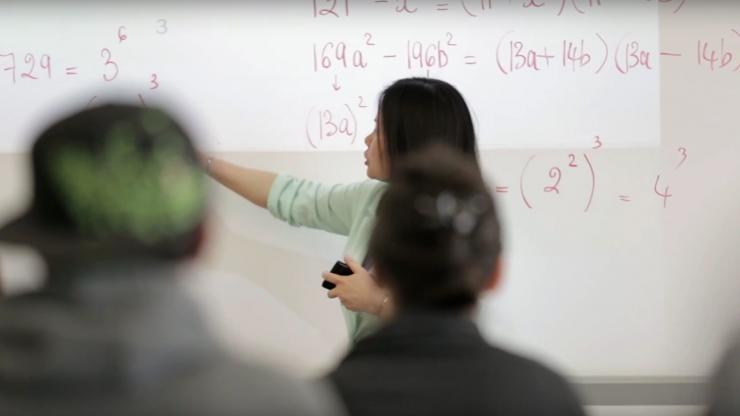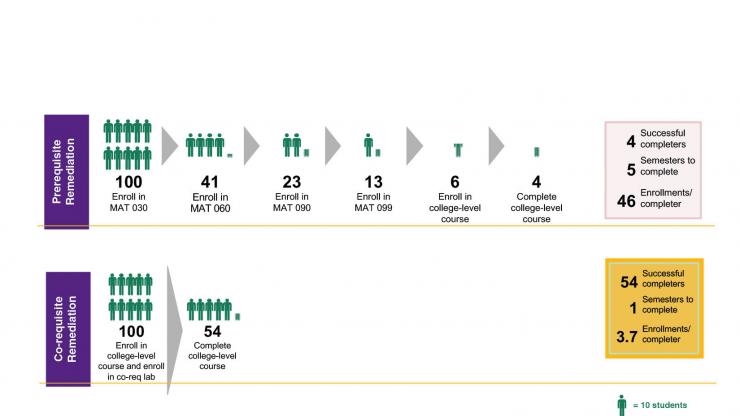



Students who didn’t test into college-level math often had to take up to four semesters of remedial math just to get into college-level math — a lengthy process that proved de-motivating to many students. For every 100 students who began this process, only four completed it.
Additionally, once students were ready for college-level math, too many ended up taking College Algebra, which until 2014 had a pass rate of just 50 percent.
To address this situation, CCD’s leaders looked to Complete College America and the University of Texas’ Dana Center for guidance. They found two promising approaches that inspired them to overhaul their math model: incorporating co-requisite instruction and college pathways.
Traditionally, students entering CCD took a placement test to determine their math skill level. Pre-requisite remedial math served those who did not demonstrate college readiness.
The first step CCD took was to discontinue mandatory placement testing. To many in academia, the placement tests were flawed; many students were not prepared for the testing environment and placed below their skill level.
Now, students can instead demonstrate college readiness using multiple measures: GPA from recent high school classes, ACT or SAT scores, or a placement test score.
Those students who do not show college-readiness are no longer enrolled in a pre-requisite remedial sequence. Instead, they enroll in a college-level course paired with a co-requisite support class. The support class prepares them for new topics and gives them an opportunity to review content minutes before they go into the college-level lecture course.
The support class also improves the student-to-teacher ratio from an average of 24 students to each instructor to 12 students per instructor.
“This model offers students a greater opportunity for direct interaction with their professor and the potential for more hands-on learning,” says James Morski, math department chair at CCD.
Following the strategies recommended by Complete College America, CCD also redesigned students’ journeys through math. Previously, 60 percent of students enrolled at CCD were advised to take College Algebra, even though it only applied to the majors of 30 percent of the students.
With the new model, students enroll in a math course specifically designed for their major. The math courses align with the skills students need for their future careers. For example, while an engineering-bound student still must take college algebra, a liberal arts student can take a statistics class about election demographics or a geometry class for landscaping.
A March 2018 research study from the Bill & Melinda Gates Foundation and Boston Consulting Group has validated that these two changes are improving math success rates at CCD.
Compared with the old model, where only four out of 100 students completed college-level math after five semesters, now 54 percent of students are completing college-level math in their first semester. Math outcomes in liberal arts courses are improving each semester. Math for the trades is at nearly 100 percent successful completion.
“It is hard to argue with the outcomes,” Morski says. “The new co-requisite model has shown tremendous improvement in pass rates at CCD.”
The math reforms have also decreased the equity gap for African American, Hispanic, and Pell-eligible students, reducing the disparity of students from these groups who have enrolled in developmental math courses and college-level courses.
“We are very excited with the direction that CCD is headed in this area,” Morski adds. “By reducing the time and cost it takes for a student to complete their math requirements, we are making higher education accessible to more Colorado citizens.”